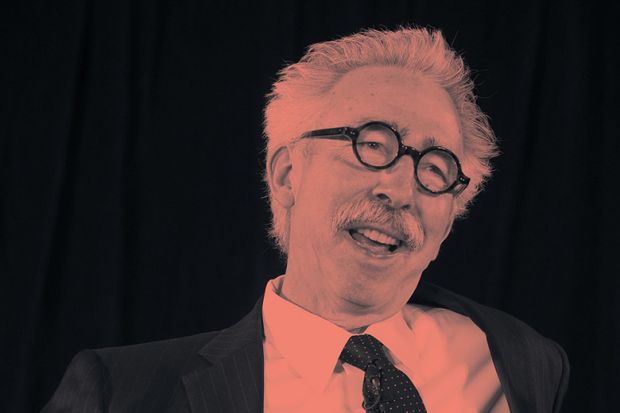"The tone of living in America is changing, and, in order to stop being scared, we started organising. I, a transgender Jew, don’t have a problem with violence against fascists.”
Neil Lawrence, a third-year linguistics student at the University of California, Berkeley, may or may not be typical of the protesters who, one evening in February, shut down a planned talk by right-wing provocateur Milo Yiannopoulos on the campus renowned as the spiritual home of free speech. It is hard to say for certain since the 150 or so who stormed the campus were masked and dressed uniformly in black. It was later calculated that the ensuing skirmishes cost hundreds of thousands of dollars in policing and repair bills; but before the night was out, it was clear that Berkeley was at risk of incurring an even higher cost as the images of the protests went around the world.
Just hours after the talk was cancelled, with the whys and wherefores yet to be established, the US president, Donald Trump, took to Twitter to issue a direct threat. “If U.C. Berkeley does not allow free speech and practices violence on innocent people with a different point of view – NO FEDERAL FUNDS?”, he wrote, in a tweet that was “liked” more than 200,000 times.
For Berkeley’s then chancellor, Nicholas Dirks, the “night before the tweet” was “deeply troubling”.
“Nobody really believed that Milo Yiannopoulos coming to campus was a test of free speech. This is someone who was thrown off Twitter – and you have to be really egregious to be thrown off Twitter, as we have discovered,” he tells Times Higher Education, during an interview about his four years in charge of the Californian institution, which came to an end in July.
“But he was invited by the Berkeley College Republicans, and they are a bona fide group. So we went out of our way to think about security plans, and thought we had a plan to allow him to speak, and [thereby avoid giving] anyone the chance to…cast any doubt on our commitment to free speech.”
That latter point is particularly important in a US context because public universities, unlike their private counterparts, are bound by the First Amendment, and as such have no choice about whether or not to allow speakers, provided they are invited according to agreed protocols.
In the event, however, Berkeley’s careful planning was left in tatters when a group identified by Dirks as militant anti-fascists – known as “Antifa” – arrived on campus.
“We had no idea they were coming,” Dirks recalls. “They had been able to mobilise without any trace on social media.” The protesters lit a fire to distract attention, then, using what Dirks describes as “black bloc tactics”, dispersed into the crowd.
Fireworks rocketed into the building and barricades were stormed, prompting campus police to advise that they could no longer guarantee the safety of the crowd – or of Yiannopoulos himself, who was escorted to his car and taken off campus.
“The most difficult thing was that this violence had been enacted by people who claimed to be on the Left,” Dirks says. “Many students sympathised with them and felt that this was indeed an appropriate thing to do to make sure these hateful statements couldn’t be made on our campus”.
The result, he says, is that he woke the next morning “already feeling there had been an escalation both of violence and of the challenge we faced in matching our rhetoric on free speech with reality. So to then find a tweet [from Trump] threatening the cessation of federal funds was…” He pauses, searching for the right words. “It was not a good way to wake up.”
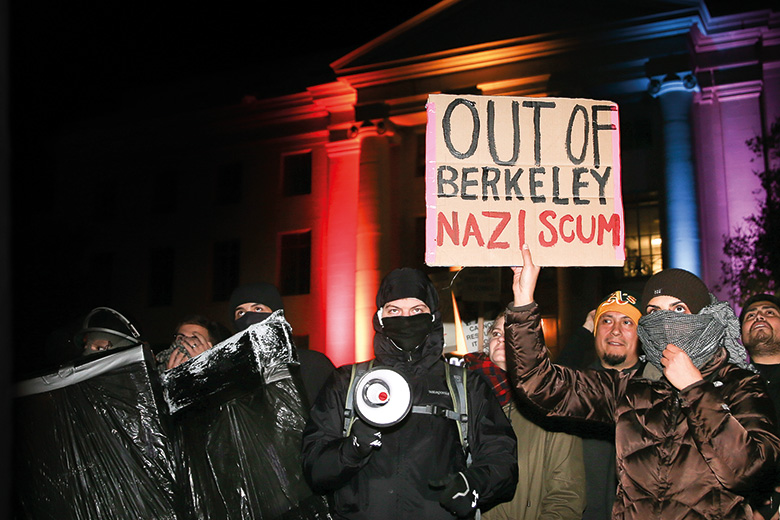
Dirks could never be accused of having gone to Berkeley in search of the easy life. His previous job was as executive vice-president at Columbia University, one of the wealthiest Ivy League institutions, with an endowment in the region of $9 billion. By contrast, when he arrived in 2013, Berkeley was still reeling from a catastrophic decline in its public funding following the financial crisis. When his predecessor, Bob Birgeneau, had taken office in 2004, a third of Berkeley’s budget had come from state coffers. By the time he stood down, it had fallen to just 12 per cent.
The steps the institution had taken to ride out the financial crisis included ramping up fundraising, hiring a J. P. Morgan banker to professionalise its financial management, and taking a strategic approach to cuts that was rather more command-and-control than Berkeley faculty were used to.
However, while Dirks knew he was taking on a major challenge, it wasn’t until later that he realised this constrained funding environment was now Berkeley’s “new normal”.
“Everyone thought [Berkeley’s funding] would rebound – the economy had rebounded, so therefore state funding should as well,” he explains. “In fact, today [the state contribution] is 11 per cent.”
To understand this ongoing decline, it is necessary to look at politics as well as economics, and, in particular, at Berkeley’s complex, multilayered governance structure.
As part of the overarching University of California system, the chancellor is beholden to the system’s board of 24 politically appointed regents and its president, currently the former governor of Arizona Janet Napolitano. The latter’s role is to represent all the UC campuses in negotiations with the state governor over issues such as funding, but she also retains control over executive pay, tuition fees and the ratio of in-state and out-of-state students (the latter pay more, and as such can help to balance the books).
So while, at Columbia, it had been part of Dirks’ job to set tuition fees, at Berkeley, the figure “had to be approved by the regents, who were advised by the president. But it was also a negotiation with [California’s] governor, and although we made clear our need for greater revenue…we didn’t get it, and, at a high level, I had almost no control over that.”
If he did not control key income streams, then he did at least have control over expenditure.
“That’s the division of labour,” Dirks jokes. But, again, that was not quite as simple as it sounds because of another aspect of Berkeley’s governance structure – the powerful faculty representation.
The engaged nature of Berkeley academics, the unique culture of the place and a commitment to its fabled role as a public institution are all great points of pride for the institution. This can be a powerful strength: for example, Berkeley excels at attracting the most talented young researchers and holding on to them, despite the higher salaries available elsewhere.
Dirks, whose academic expertise is on the British empire in South Asia, is very aware of the history of all this, and particularly the genesis of the academic senate.
“The late 19th and early 20th century in America was the era of the ‘great leader’,” he explains, “and in the case of the University of California, that was [personified by] Benjamin Ide Wheeler [president from 1899 to 1919, pictured right]. He used to ride around campus on a horse with a big stick, accosting students who weren’t in class. He also made all the decisions about hiring faculty, promotions and so on.”
Such absolute power came to an end following a faculty revolt after Wheeler’s retirement that led to the establishment of the first academic senate in the US: a “remarkable and exemplary structure of faculty participation” that went on to be widely imitated.
“But, I would say a couple of things,” Dirks continues. “One: it developed all its protocols and culture at a time of very generous state funding. So, within the academic senate, for example, there is something called the budget committee. This makes every recommendation about faculty salaries, promotion and tenure. But although they’re called a budget committee, they don’t work to a budget. All these decisions are made to a notional sense of equality, justice and fair play across the institution, without a single dollar figure [in mind].”
The result, Dirks says, is that when financial problems hit, there is no mechanism within the senate to think pragmatically about the trade-offs required.
The second problem, as he sees it, is that while the senate has legitimacy among some faculty, “Berkeley being Berkeley”, there are a number of other rival groups. One in particular, he says, proved to be highly adept at using a “direct line to the local media to prosecute its own concerns”.
Be that as it may, Dirks knew that if he didn’t move to plug Berkeley’s huge structural deficit then the institution’s whole future could be put in jeopardy. In a 2015 memo to staff, he wrote that “what we are engaged in here is a fundamental defence of the concept of the public university, a concept that we must reinvent in order to preserve”.
One of his decisions was to set up a new “office of strategic initiatives” to spearhead a review.
“I felt we needed a structure to allow maximum participation, but that would also make very clear that choices would have to be made that would involve cuts, possible mergers, and investments in some areas that would be substantially more than in other areas,” he says.
Once the office was established, staff were informed about the scale of the deficit. “It was huge – $150 million,” Dirks says. “Fortunately, we had the money in reserves, but we didn’t have it forever and the projections were that [the deficit] was going to continue to climb. The scale of it, I think, caused faculty to fear that this process was going to lead to the demise of their own school or department.”
There was also, Dirks acknowledges, a degree of distrust in the administration, something he says he may have “played into”, despite trying to be as open as possible, but which also stemmed from failed attempts to deal with the budget deficit under previous regimes.
The office of strategic initiatives was not to last long, and Dirks might be forgiven for feeling that his room for manoeuvre was being hampered from all sides.
“My concern about the positioning of university leadership with a governance structure on top that doesn’t really include them, and a governance regime below that is, at the very least, not always in partnership with the administration, is that it has led to a cultural stand-off that too often makes understanding seem to be capitulation,” he says.
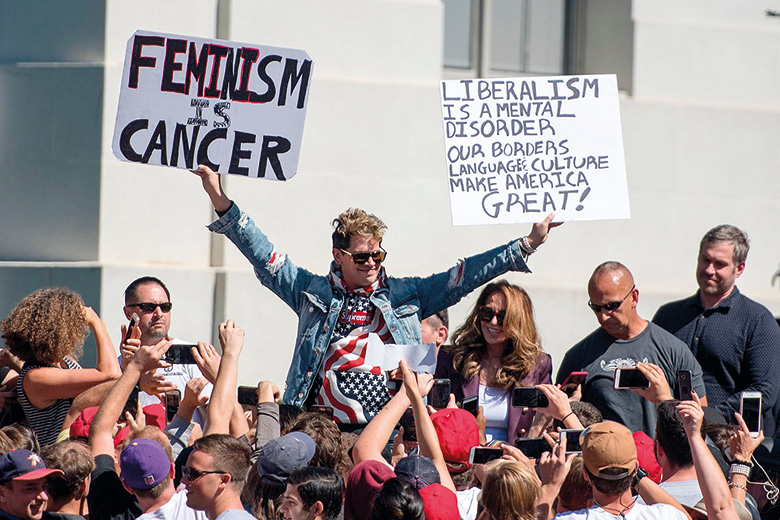
Another facet of Dirks’ tenure was the constant media scrutiny. As well as the financial problems and free speech rows, Dirks had to deal with a number of high-profile scandals at Berkeley, including several allegations of sexual harassment involving academic staff.
The handling of some of these cases was, by Berkeley’s own admission, unsatisfactory, and more than one administrator left their role in the fallout. Alongside such genuine and far-reaching issues, however, came a steady stream of rather less serious stories on issues such as the cost of a fence built around his residence amid security concerns on campus.
Dirks, who came to Berkeley with sleeves rolled up and the laudable ambition of securing the future of an imperilled icon of public higher education, remains irked about this feeding frenzy. To illustrate the point, he refers to another story in the Daily Californian in 2016 that he had built a $9,000 “escape hatch” in his office.
“When the story came out I didn’t know what they were talking about,” he says. “So I went to my office and I started looking for this escape hatch.”
In fact, he says, the paper was referring to a new door that had been built at the request of office staff after a number of occupations, “some of which had felt very threatening to some staff”. However, “the memes started immediately: I was in the office with my hair sticking straight up, moustache and glasses, then going down a slide on a Disney-like Matterhorn ride to get to safety. And I thought: ‘OK, surely the record will be corrected when some follow-up is done.’ But I think that escape hatches are now indelibly associated with me for the rest of my life.”
In an age of “fake news” and politically motivated attacks on journalism, Dirks is a believer in the power of the media. Indeed, he is clear that in the Berkeley context, reporting – good or bad – has a tangible influence on the UC board of regents.
“When a story comes out in the newspaper, [the regents] read it and think about what it means for them,” Dirks explains. “Take salaries, for example. In closed session, the regents are concerned about being competitive – they know that the salaries [Berkeley pays] are much lower than at private universities, and that many well-qualified people just don’t make themselves available [as a result]. But the way in which the governance takes place is incredibly responsive to media-driven issues, so one also feels that in [open-session] regents’ meetings they are making comments that they know are going to be written up by the press.”
The result, he reflects, is that the transparency and public accountability that is so fundamental to public higher education on one level can, on another, become an Achilles heel. And his fear is that if the erosion of support for public higher education continues, “it will become like primary and secondary education in the US, where anyone who has the means will send their child to a private school, and the masses will be expected to get a second-tier education at public institutions. That is a real departure from what we’ve known for the last 100 years.”
If this all sounds rather gloomy, then it’s important to say that Dirks remains firmly of the view that the public mission of Berkeley is as relevant as it has ever been. In 2014, according to the Harvard Business Review, more than 9,000 Berkeley undergraduates received Pell Grants (needs-based support from the federal government): almost as many as at all eight Ivy League institutions put together, and nine times as many as at local rival Stanford University.
Dirks adds that “if you look back at the student demographics in the 1960s, they were overwhelmingly white middle class. Today, whites are the minority, and the socio-economic distribution is very different. So, in my view, you can use private funding and have a very clear commitment to being a public university in terms both of what that means historically and looking forward to the needs of California and the needs of the world in years to come.”
He is also adamant that fulfilling local responsibilities and maintaining a profile as a centre of world-class research are not incompatible – although nor are they easy (Berkeley slipped from 10th to 18th place in this year’s Times Higher Education World University Rankings, for instance).
“When you have the kind and calibre of faculty that we have at Berkeley, then you will continue to attract the best young PhDs and researchers to come and work with them,” Dirks says. “We are doing as well as we have ever done in recruiting junior faculty, and retaining faculty when they get outside offers.
“What we also found, however, is that there are more outside offers, [the salaries] are more difficult to match, and it’s much more difficult to recruit mid-level or senior faculty than it was even 10 years ago.”
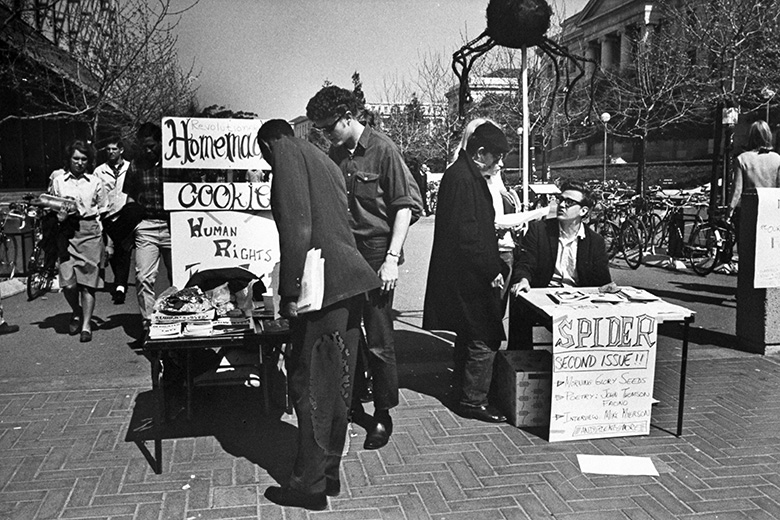
Now free from the burdens of high office, Dirks can leave others to worry about such matters. As a public intellectual, however, he cannot simply move on from the broader threats posed by the febrile political atmosphere. When Yiannopoulos did eventually speak at Berkeley, at a poorly attended 15-minute appearance in September, it was a damp squib. But writing recently in the Washington Post, Dirks sounded the alarm about what he sees as “a growing move to use current controversies [such as that surrounding Yiannopoulos] to regulate free speech on public campuses”.
He is particularly concerned about the “very curious phenomenon” of the right-wing thinktanks that promote legislation specifically aimed at “making sure the conservative voice is heard and represented”: legislation that has been adopted or is being debated in 14 states, including California.
“[Such legislation] sounds on first reading to be justified; it says that universities should be open to speakers no matter what their political position…But if you read on, it has a number of aspects that are quite disturbing, one being a protocol for the disciplining of students who disrupt events through protest. It doesn’t define what disruption is, it doesn’t define what protest is, but it does define what the punishment should be, which is two strikes and you’re out – suspended from the university.”
Equally concerning, for Dirks, is what he sees as an attempt to control what university leaders say, with the threat of sanctions if they are judged to have taken too political a point of view.
“Again, who is going to adjudicate that? Virtually everything we say around inclusion and diversity, for example, could be seen by some groups as politically inflected,” he says.
In his Washington Post article, he goes further still, arguing that this is part of a “full-throated campaign to close the American mind”.
The place that Berkeley has, or used to have, in American public consciousness was evoked colourfully by Peter Agre, the Nobel prizewinning director of the Johns Hopkins Malaria Research Institute, at this year’s Times Higher Education World Academic Summit in London.
“When I was in fourth grade [in the 1950s], my father, who was a chemistry professor at a college in Minnesota, had a sabbatical year at Berkeley – a move I liken to going from Lake Wobegon to Sodom and Gomorrah,” he joked. “The diversity at Berkeley as a child was palpable and exciting. The heterogeneity was clear. The gentleman across the street was a janitor; next door was a salesman; my brother had a playmate from the block behind us who was the son of Edwin McMillan, who won a Nobel for discovering [neptunium]. All the kids were playing together.”
This idea of a diverse, bohemian community with a university at its heart serving as an “upward mobility machine” (to quote The New York Times) still has powerful resonance. Whether the neighbourhood measures up to that ideal today is debatable: the Bay Area has been taken over by tech firms noted for their lack of diversity, and has an economy and housing market to match (a janitor living in Berkeley today would have little more than their broom cupboard to bed down in).
But the university, Dirks insists, still retains its commitment to meritocracy above all else.
“What I worry about is that a lot of the public concern about colleges and universities – whether it’s about free speech, safe spaces, so-called coddling of students, over-paid administrators and faculty, what’s presented as ridiculous research – diminishes the sense of what universities stand for in the popular imagination,” he says.
“There was a time in California when a significant majority of the residents took great pride in the number of Nobel laureates at the University of California, in its recognition for research excellence. I don’t know if that’s going to come back again; I certainly hope so.”
For Dirks, it’s clear that the idea of the university matters a great deal, and is worth fighting for.
On that, if not on the manner of combat, he and the protesters who drove Yiannopoulos from Berkeley’s hallowed campus have at least some common ground.
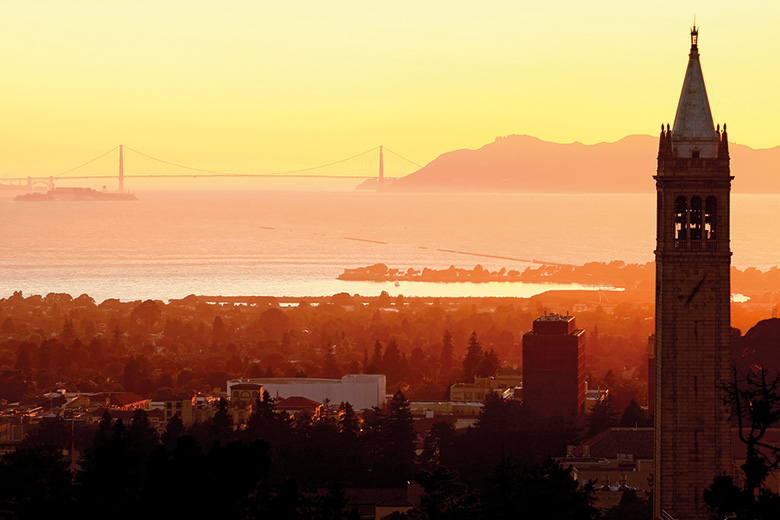
The decline of the distinctive public research university
The University of California is surely the US’ most well-known public university system, and Berkeley its most iconic campus. So if even Berkeley is struggling, does that imply that a whole distinctive facet of American higher education could disappear?
There is an argument that, in effect, it already has. That case was made in a 2016 paper by Ronald Daniels and Phillip Spector, the president and vice-president for strategic initiatives respectively at Johns Hopkins University. In their paper Converging Paths: Public and Private Research Universities in the 21st Century, they argue that the traditional mission of public research universities was to provide “an affordable education that is available broadly to the populace, tailored to the needs of the community, and independent from influence”.
However, since the 1990s, public univer-sities’ incomes from state sources have been on the decline, such that “a large number of public research universities now receive less than 10 per cent of their revenue from state funds”, Daniels and Spector write. The decline has been particularly sharp since the 2008 financial crash, during which period “more than half of the states have cut spending [on public universities] by at least 25 per cent”. Nor have these declines been reversed as the economy has begun to recover.
Public universities have responded by putting up tuition fees and recruiting more out-of-state students, who can be charged more. By contrast, private universities have moved to improve their accessibility over the past 15 years, both by technological means such as massive open online courses, in which they are “among the major investors and participants”, and by improving their affordability. “As a result, tuition and fees net of financial aid increased by only 17 per cent at private non-profit universities in constant dollars since 2000, compared to an increase of 136 percent at public four-year universities during the same period,” Daniels and Spector write.
So “although net tuition is still lower at public than private research universities in most cases, that is no longer always the case”. The exceptions include Berkeley’s neighbour, Stanford University.
Meanwhile, some public universities recruit as few students from a poor background (in receipt of Pell Grants) as private universities do – although Berkeley’s proportion of such students (35 per cent) still far outweighs those of Stanford (15 per cent) and the California Institute of Technology (11 per cent).
Overall, increases in federal spending on research over the past few decades mean that some private research universities, such as Johns Hopkins and the Massachusetts Institute of Technology, receive a greater proportion of their overall budgets from all public sources than do some of their public peers, Daniels and Spector note.
Recent years have also undermined public universities’ historical independence from influence. They have become “the subject of ever greater political debate, scrutiny, and intervention by public actors (or their agents). This in turn has led…to a number of wrenching clashes between state political leaders and university leadership on a wide range of topics, including not only their budgets
but also the day-to-day operation and even the academic decisions of their universities.”
Nor does the fact that public universities are beholden to local politics necessarily make them more responsive to their environs, Daniels and Spector claim. They cite the University of Pennsylvania’s pioneering efforts to revitalise its neighbourhood – an initiative imitated by Daniels himself at John Hopkins (“Pillar of the community”, Features, 9 February).
The University of California is among the public systems that, in relative terms, has “a greater degree of structural independence from the state”, Daniels and Spector say. But, even so, its campuses are “still subject to ongoing state influence and interference in areas such as appropriations, auditing, and health and safety. As a result, the disparities between private research universities and even the most independent public research universities continue to grow in areas such as faculty pay or expenditures per enrolled students.”
Paul Jump
Register to continue
Why register?
- Registration is free and only takes a moment
- Once registered, you can read 3 articles a month
- Sign up for our newsletter
Subscribe
Or subscribe for unlimited access to:
- Unlimited access to news, views, insights & reviews
- Digital editions
- Digital access to THE’s university and college rankings analysis
Already registered or a current subscriber? Login
